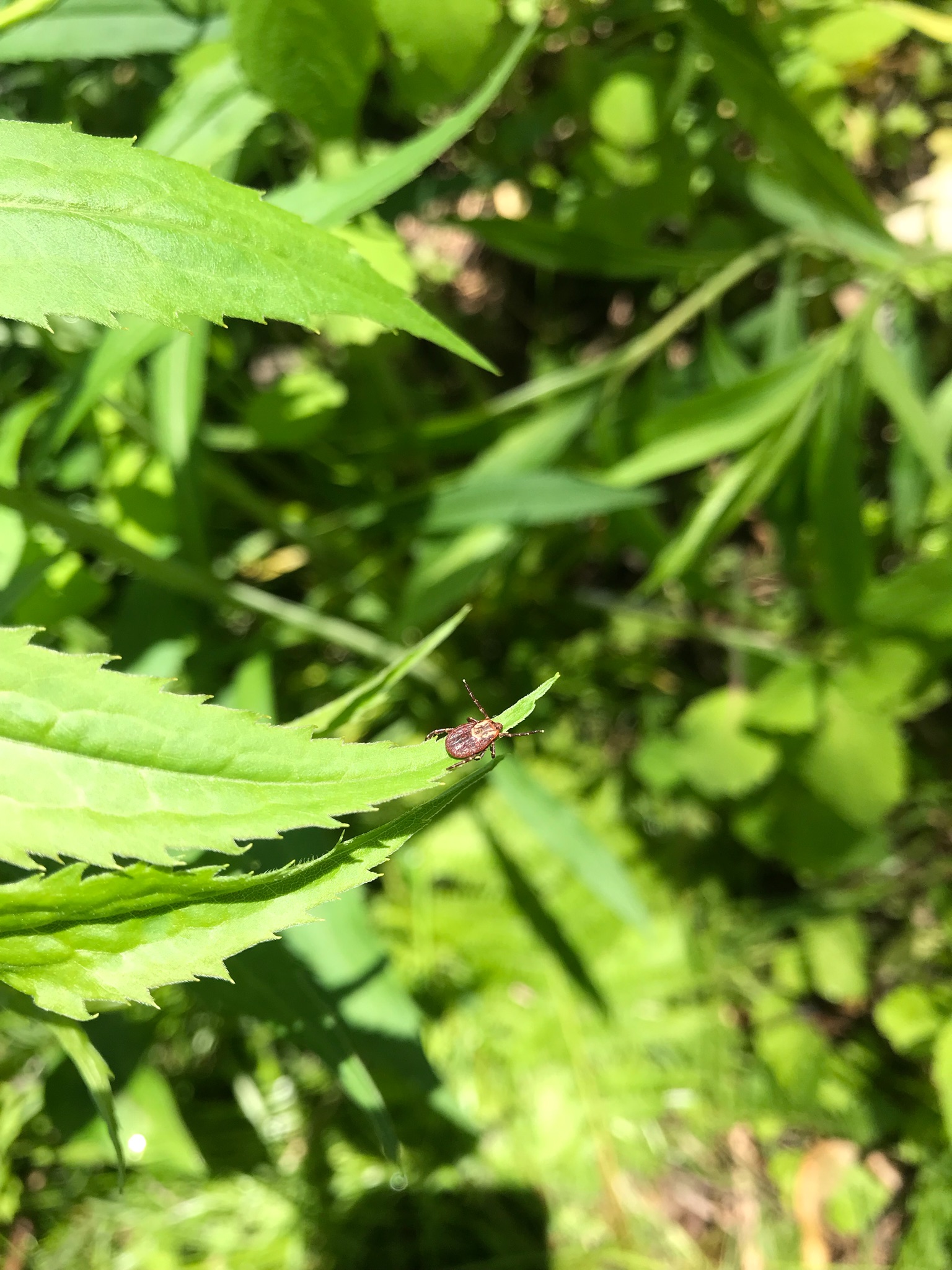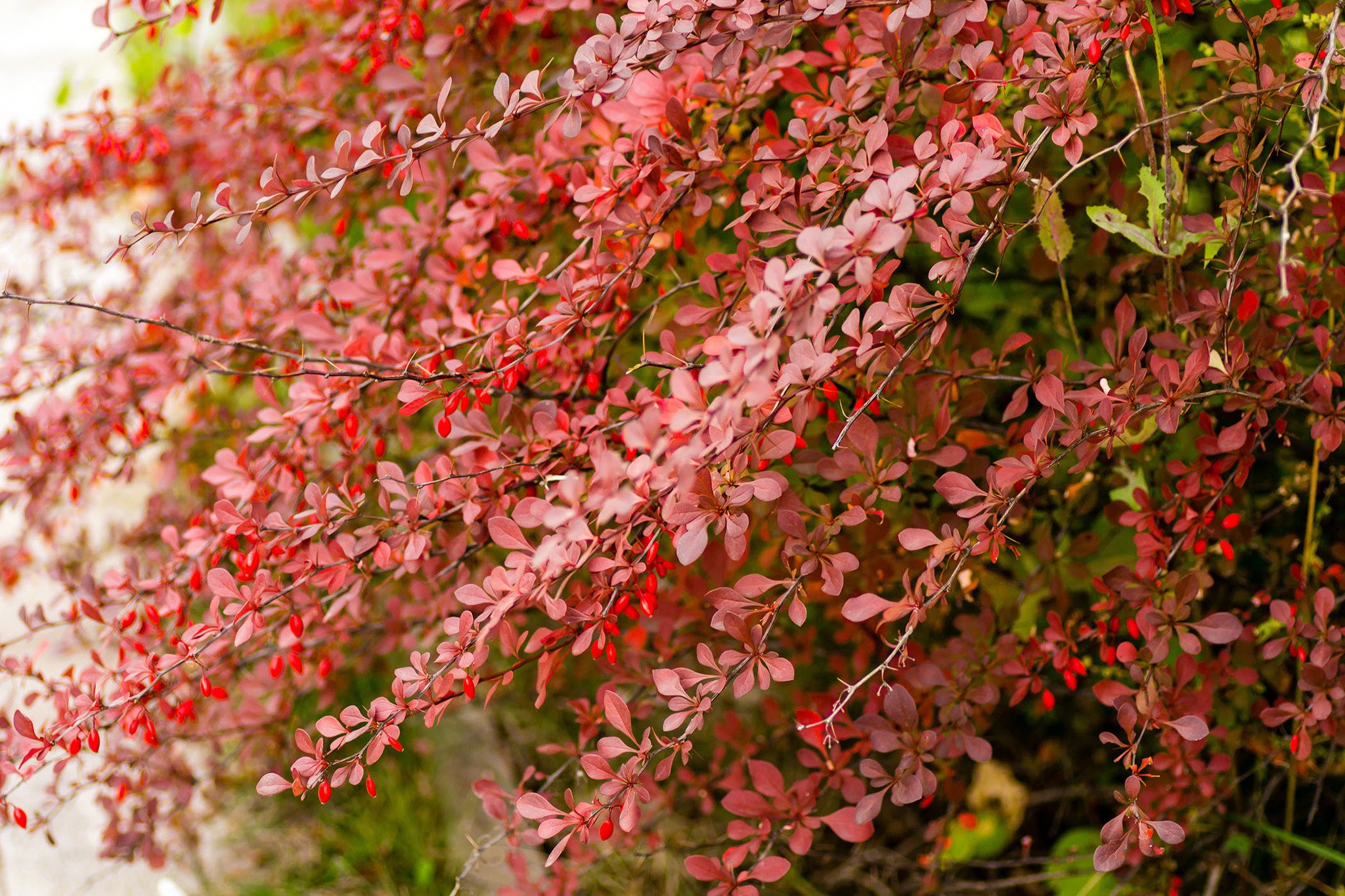Japanese Barberry, also known as Berberis Thunbergii, is a popular plant for landscaping because of its ability to provide privacy and responds well to pruning. Although this plant is beautiful, it is a nursery for ticks. It has been banned in 5 different states: Maine, Minnesota, New Hampshire, New York, and now in Pennsylvania.
Barberry plants originated from Eastern Asia. It was then imported in 1875 from Russia to Arnold Arboretum in Boston. Since then this bush has then spread north to Nova Scotia, south to North Carolina, and east to Montana, and has flourished as a plant for landscaping.
The leaves in the Japanese Barberry are oval shaped with smooth edges. Most of the time the leaves will be a burgundy color, but they may turn green if they do not receive enough sunlight. This bush can grow up to 2-8 feet high and once the stem touches the ground it can start to grow roots. Barberry plants are known to be very resilient, and are drought tolerant. The germination rate of the seeds are 90% and can also remain dormant for up to 10 years. You can easily identify this plant in the early spring because it will be one of the very first plants to appear. There are huge spines on the branches of the plant that keep unwanted guests away. Since Barberry bushes can multiply rapidly and have huge spines, they limit the movement of larger mammals like deer. Barberry also grows yellow flowers and red berries that birds love to eat, who will then carry the seeds to new locations.
A study that was done in Connecticut found that if there are large amounts of Japanese Barberry bushes there is a higher chance of ticks being there. Ticks can die from dehydration if the humidity is lower than 80%. Since the Japanese Barberry has a higher density foliage than most native plants, it can hold a high humidity level which makes it the best place for a tick to be. Normally ticks are active for 15-16 hours, but since Barberry bushes give ticks protection, they are active for 23-24 hours making it more likely to get bitten by ticks. Not only are Barberry bushes a nursery for ticks, but it is also a nursery for white footed mice and other rodents which are also one of the main food sources for ticks, and reservoirs for Lyme disease.
In addition to harboring ticks, Japanese Barberry is an invasive plant by changing the pH of the soil to be more basic native plants, like the blueberry bush will start to get pushed out of its own environment.
On October 8th, 2021, Pennsylvania added Japanese Barberry onto the noxious weeds list meaning that this plant has been deemed harmful and can no longer be sold or planted. It is very rare that a commonly sold plant would be placed on the noxious weed list. As of right now, there are only 60 plants on this list. Though this ban was placed in 2021, it will take two years to allow nurseries and landscaping companies to remove Barberry bushes from their stock and find replacements.
If a Barberry is spotted it is best to remove the bush as soon as possible. Japanese Barberries can be very difficult to remove. With thick gloves the smaller Barberry bushes can be pulled out. If they are larger bushes they will have to be dug up. Make sure that the roots are completely removed otherwise they will be able to regrow.
https://www.invasivespeciesinfo.gov/terrestrial/plants/japanese-barberry
https://www.nl-nhcc.com/images/pdfs/japanese_barberry.pdf
https://www.dcnr.pa.gov/GoodNatured/pages/Article.aspx?post=116


